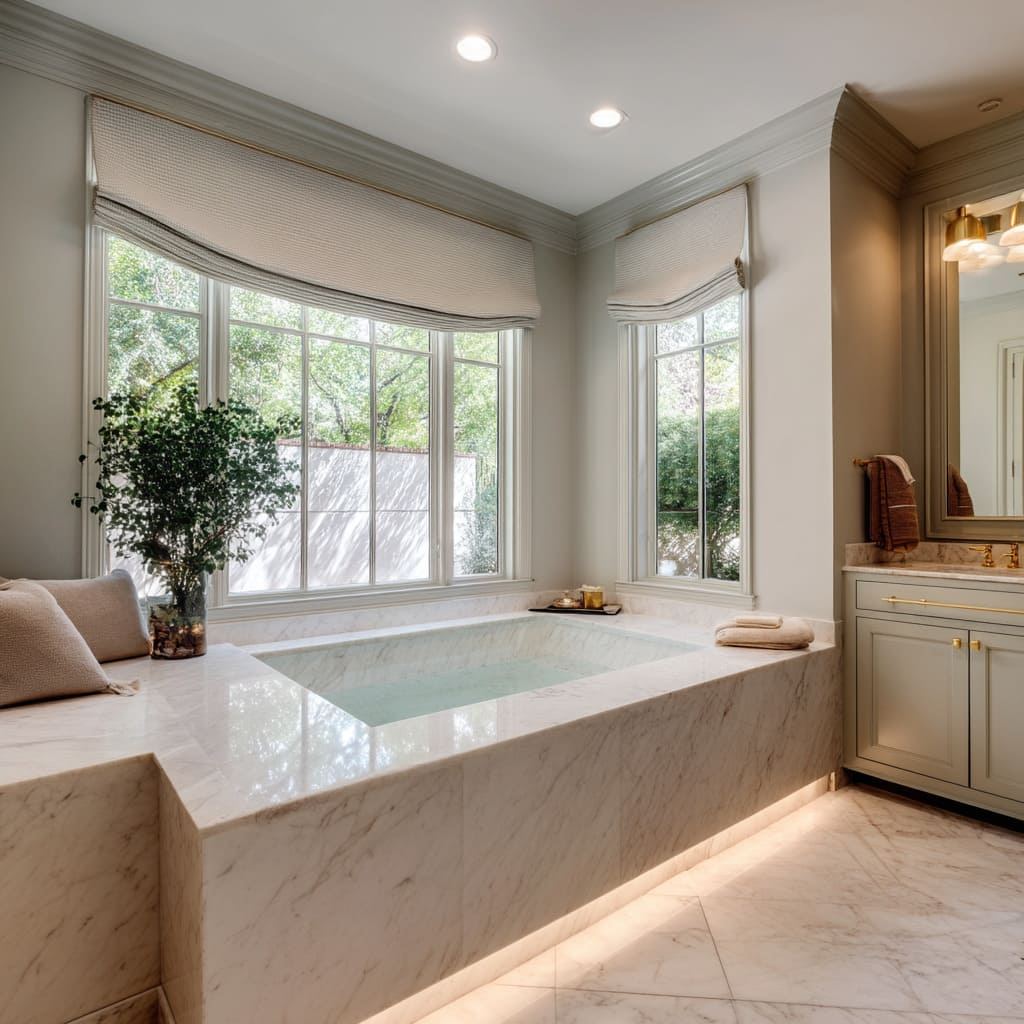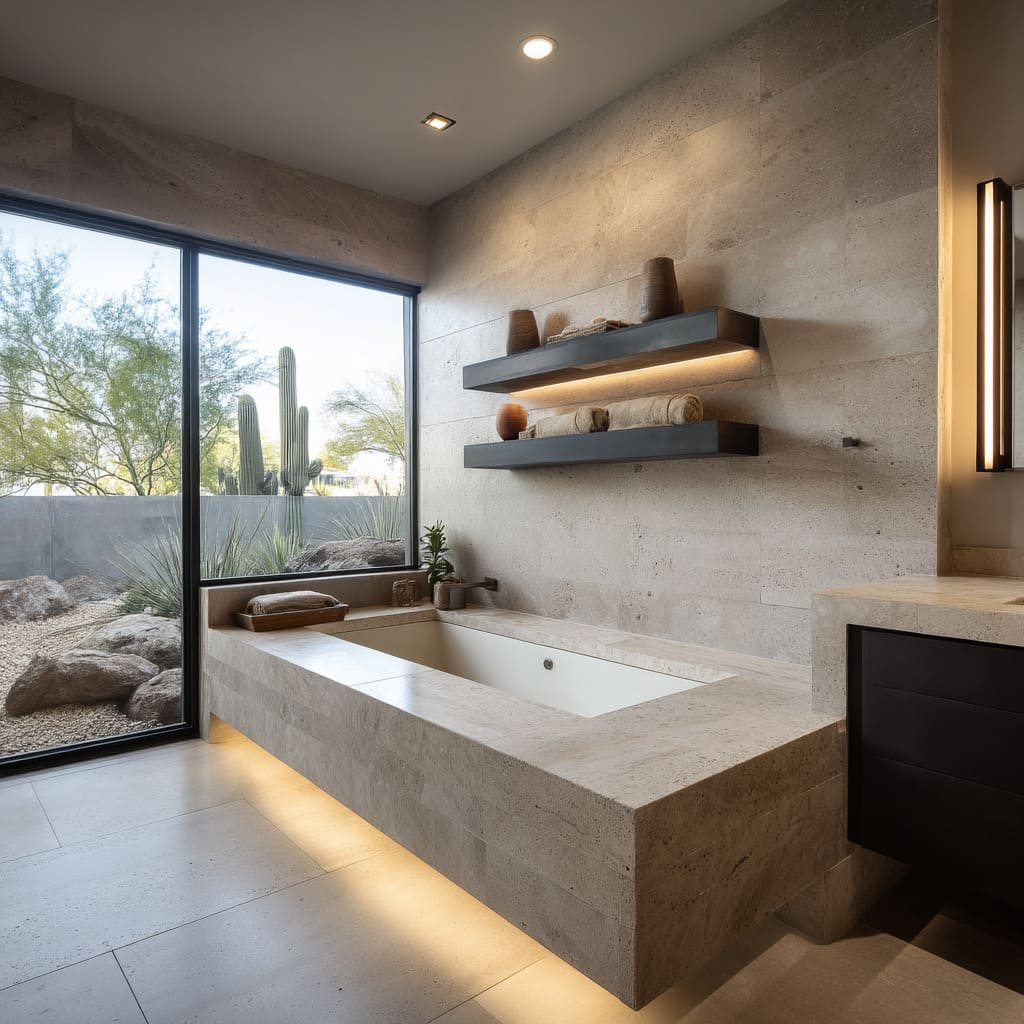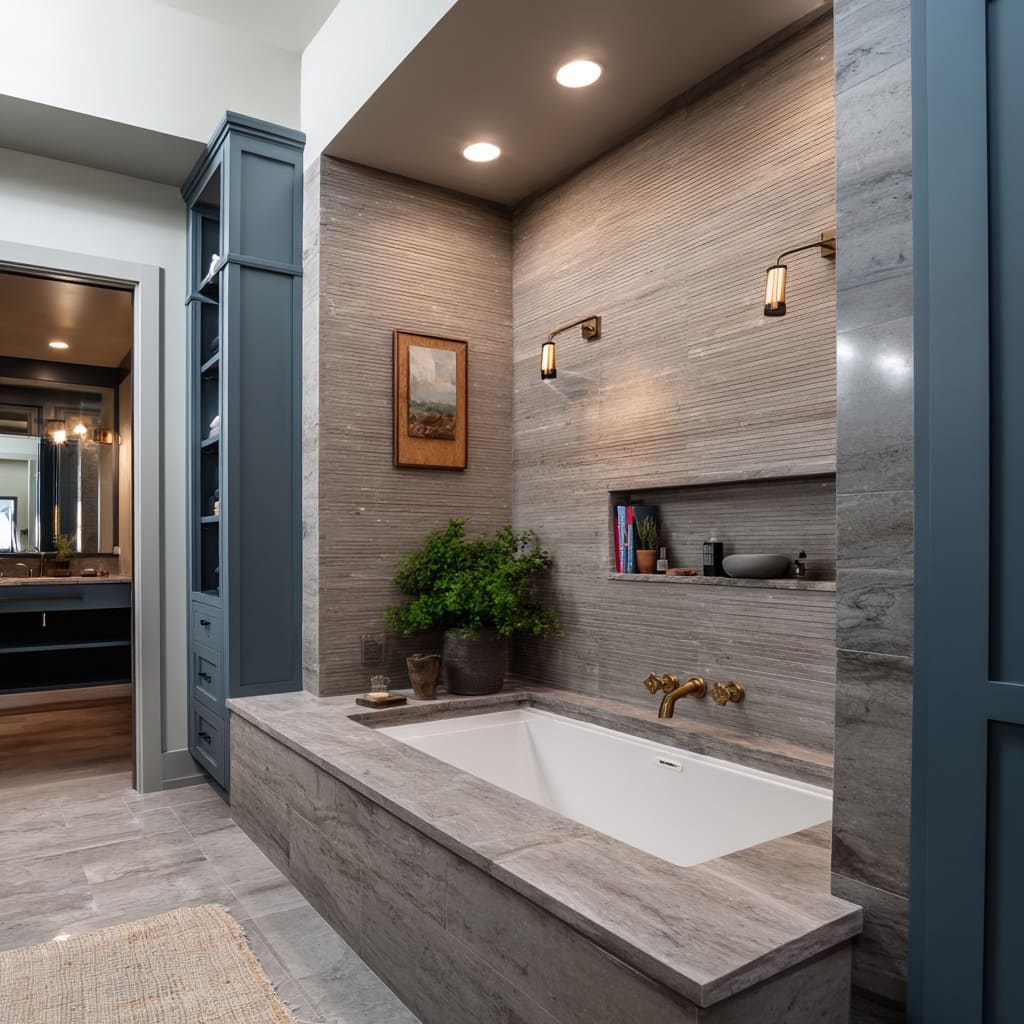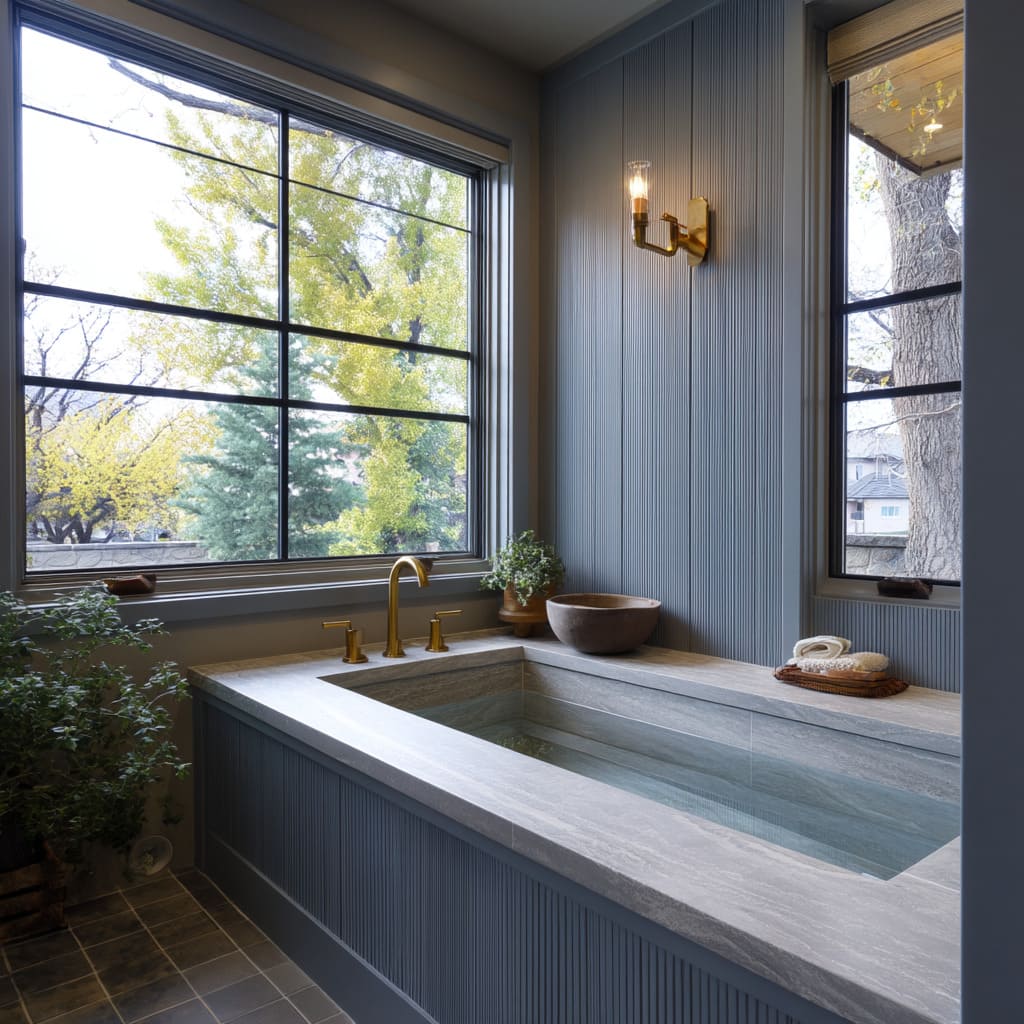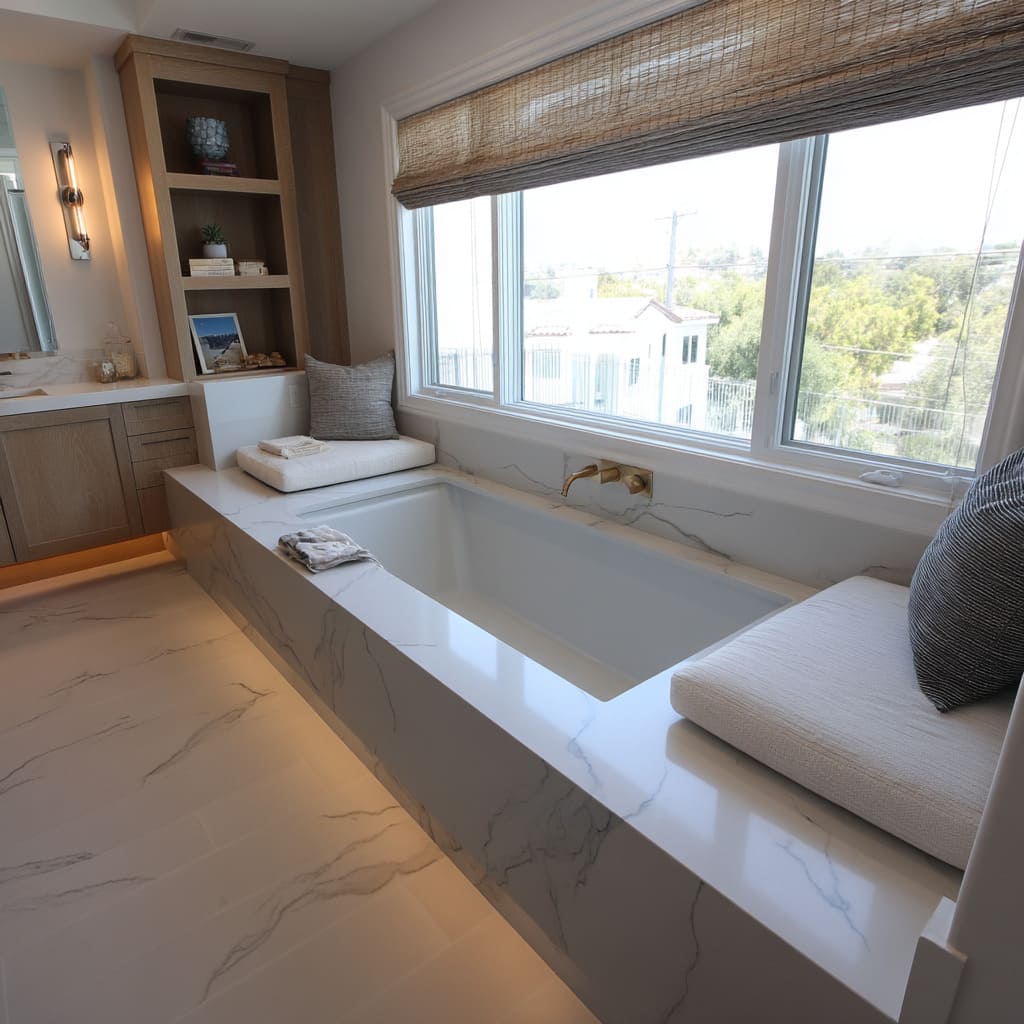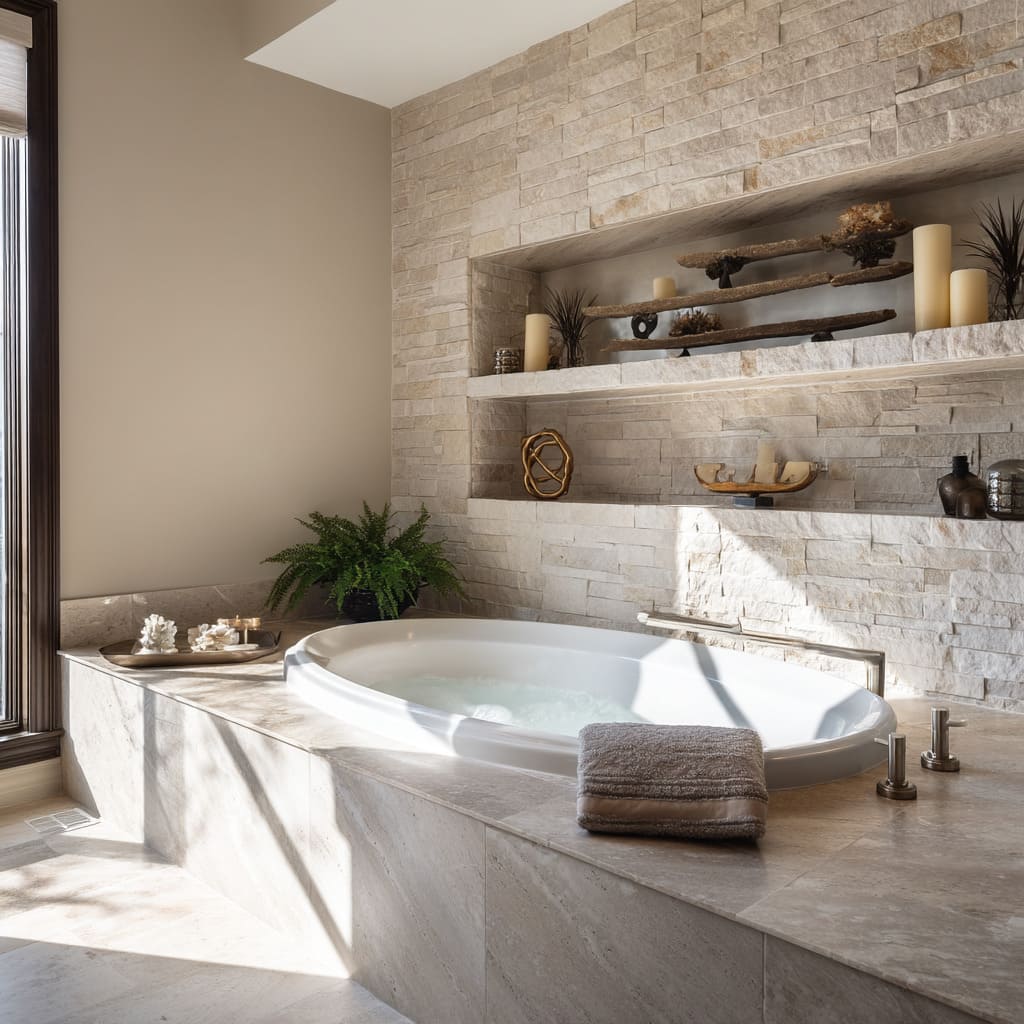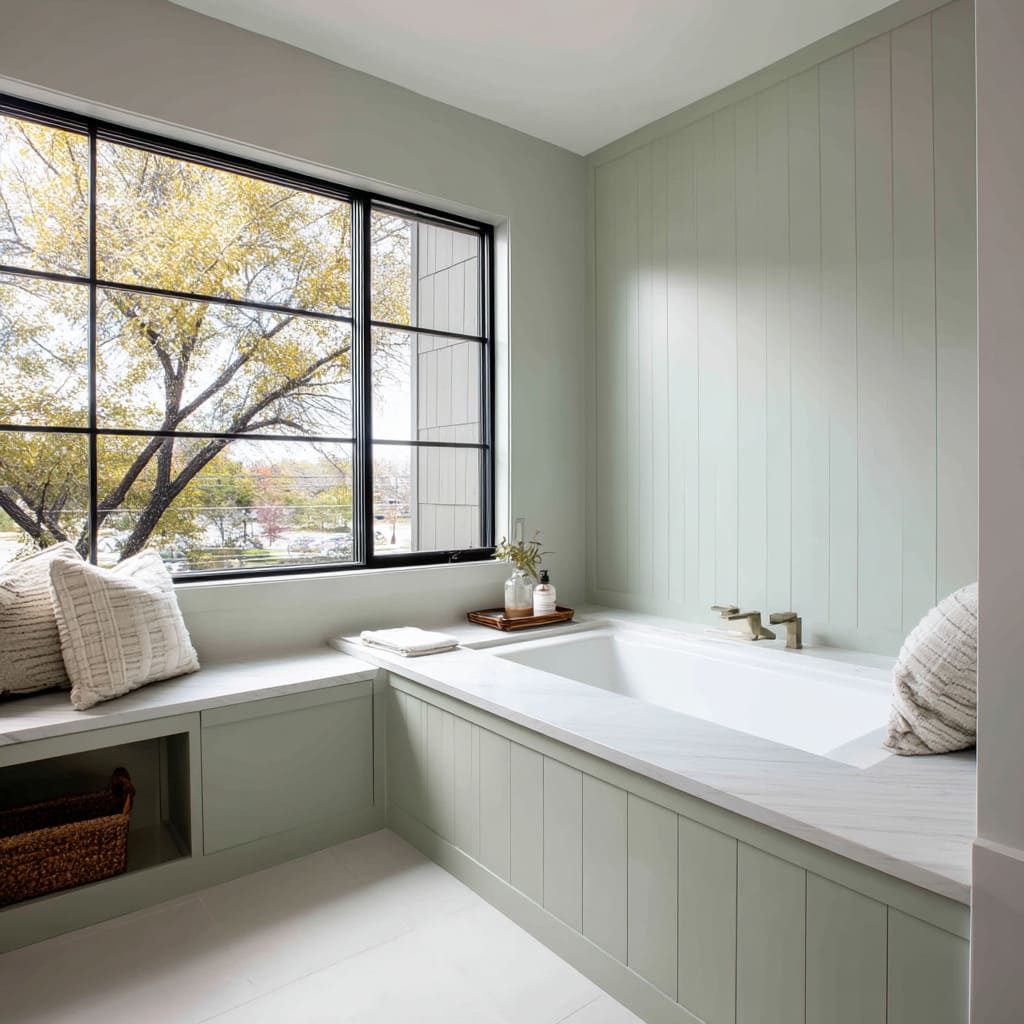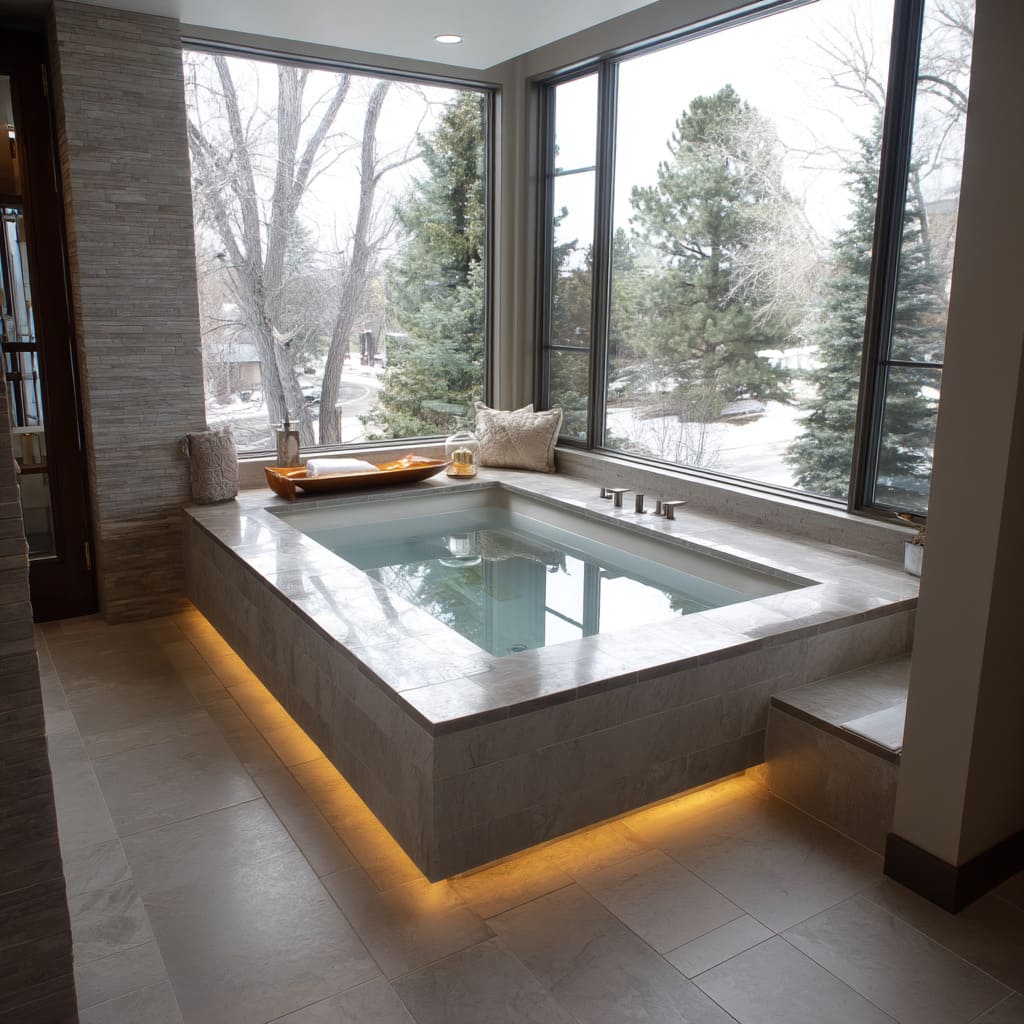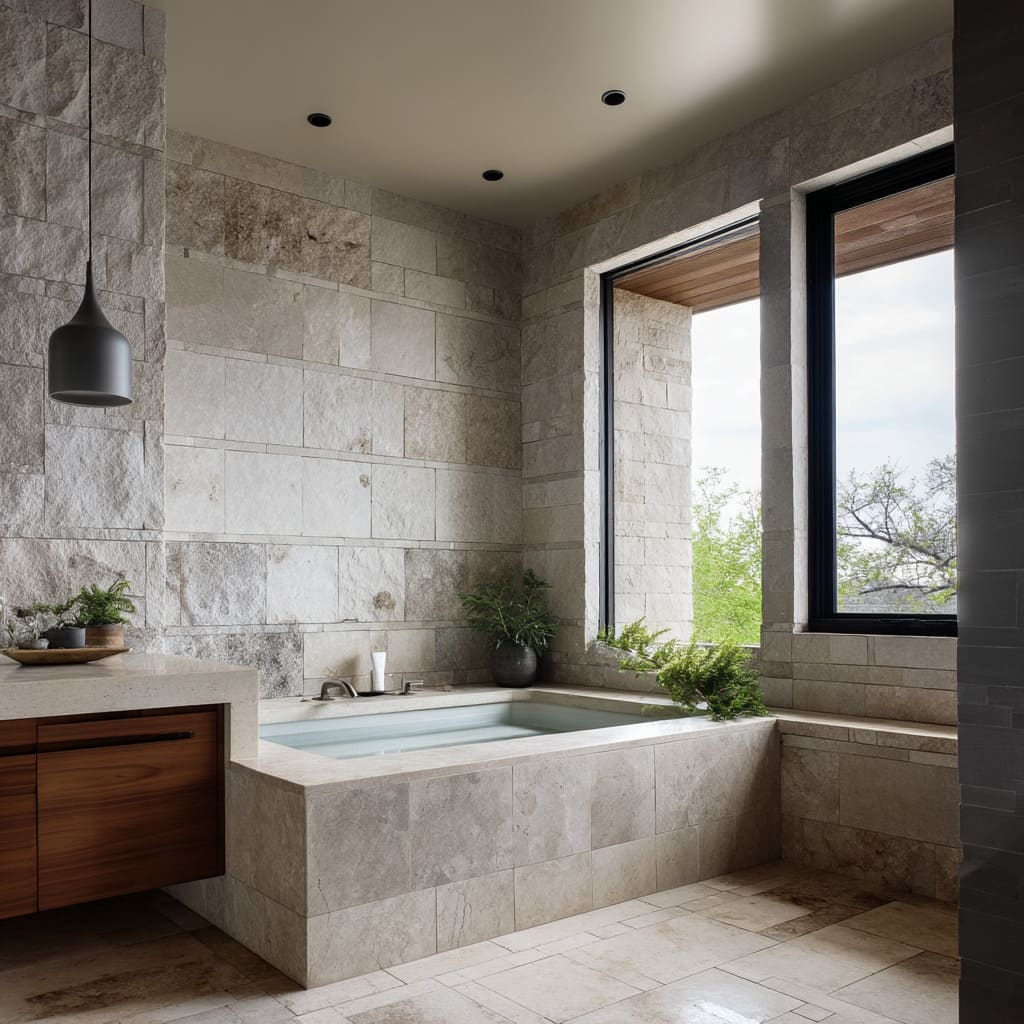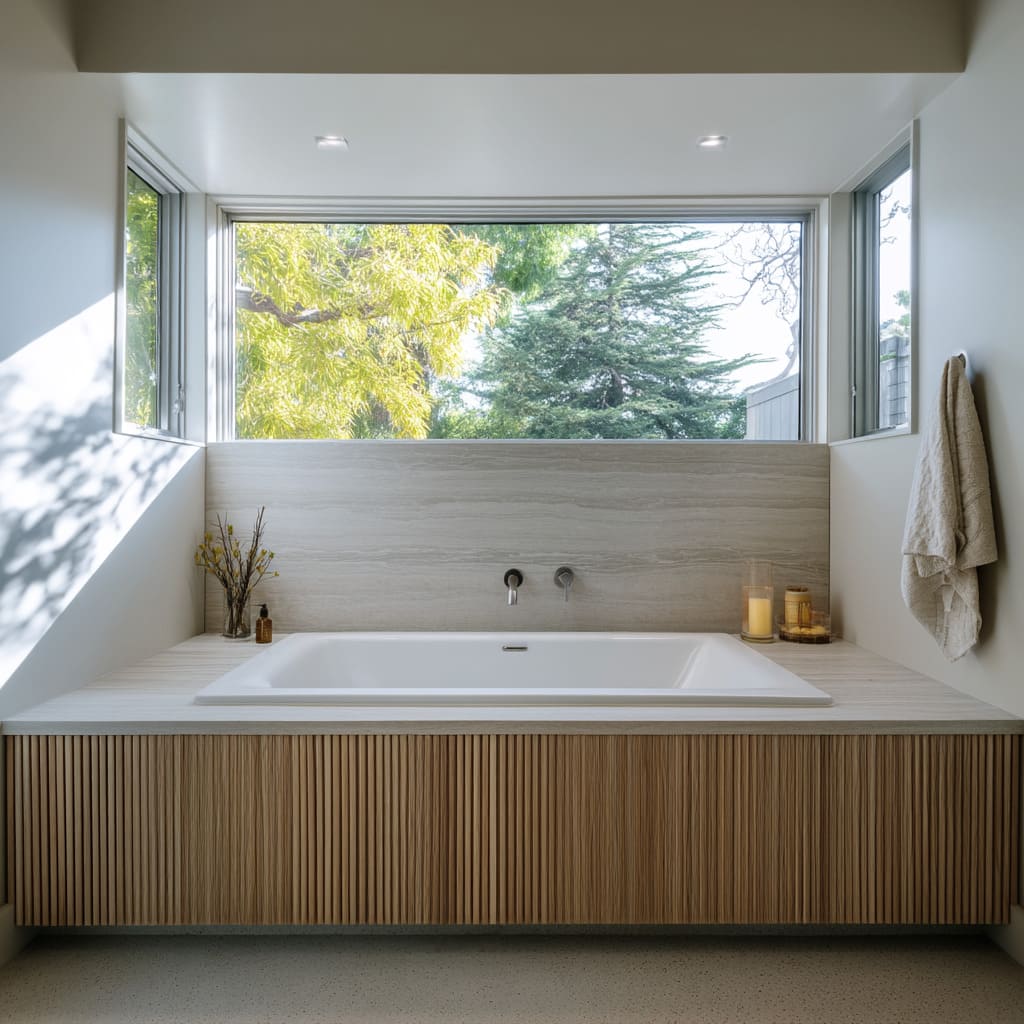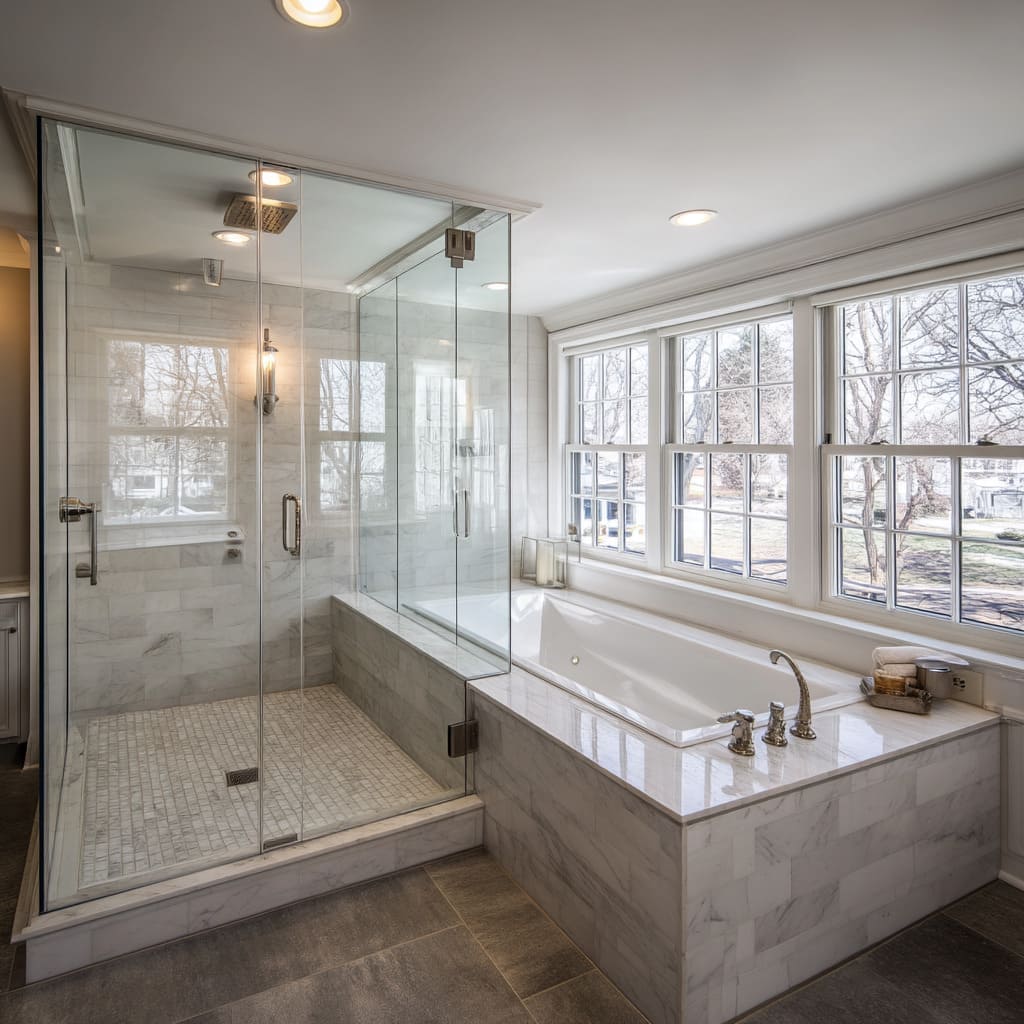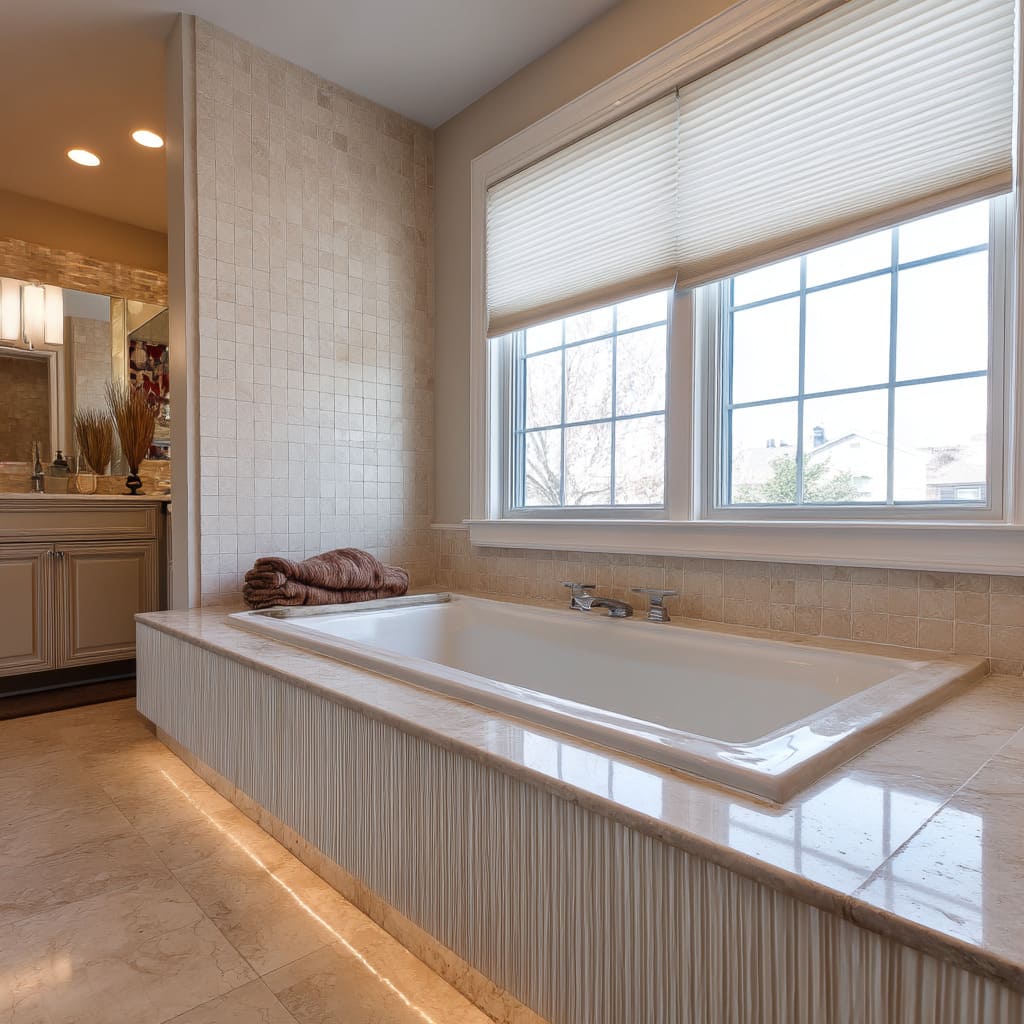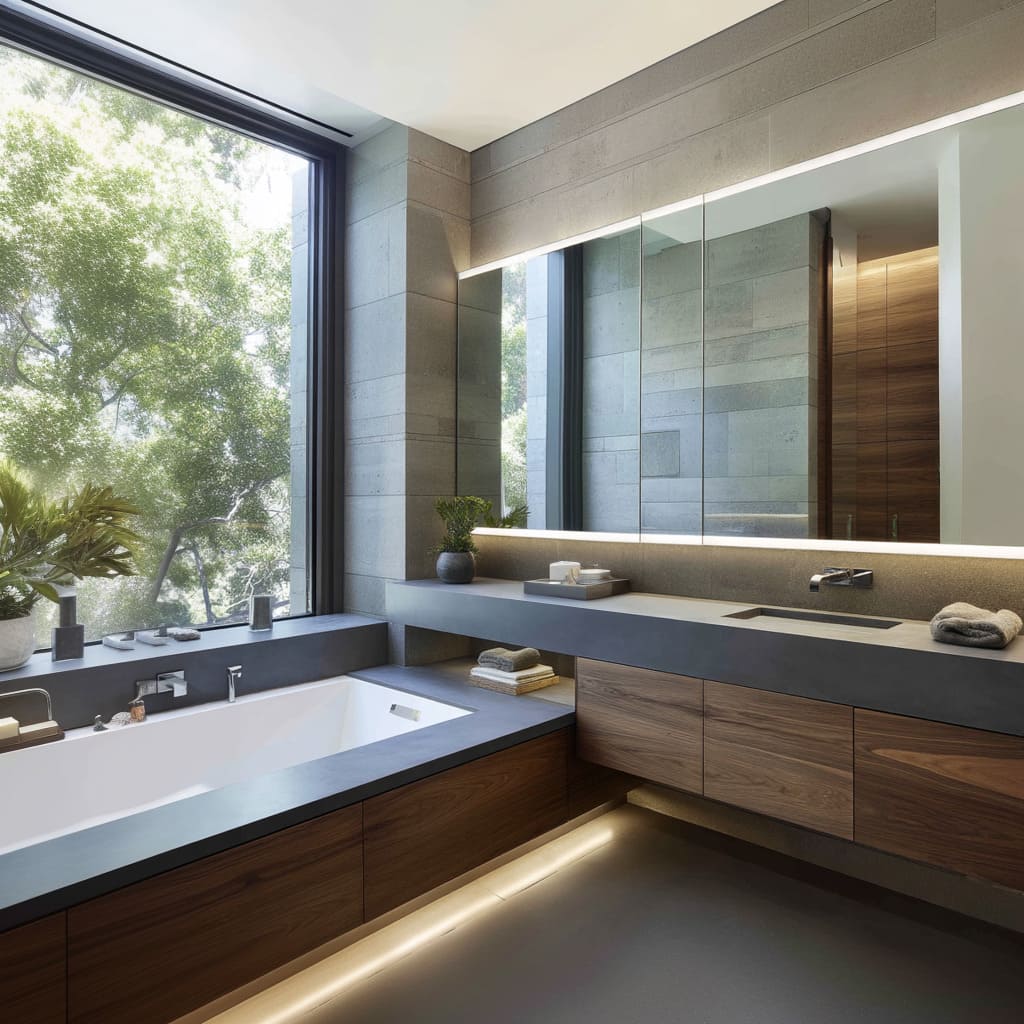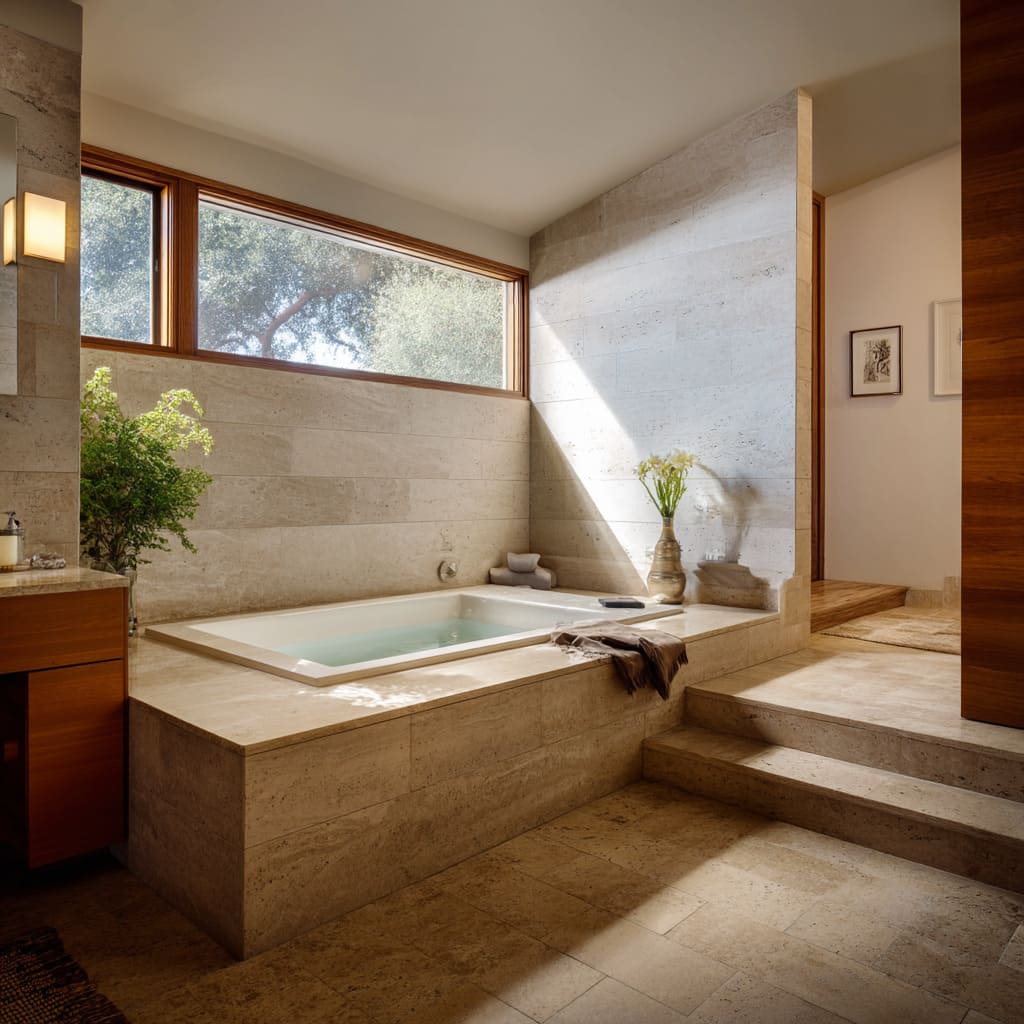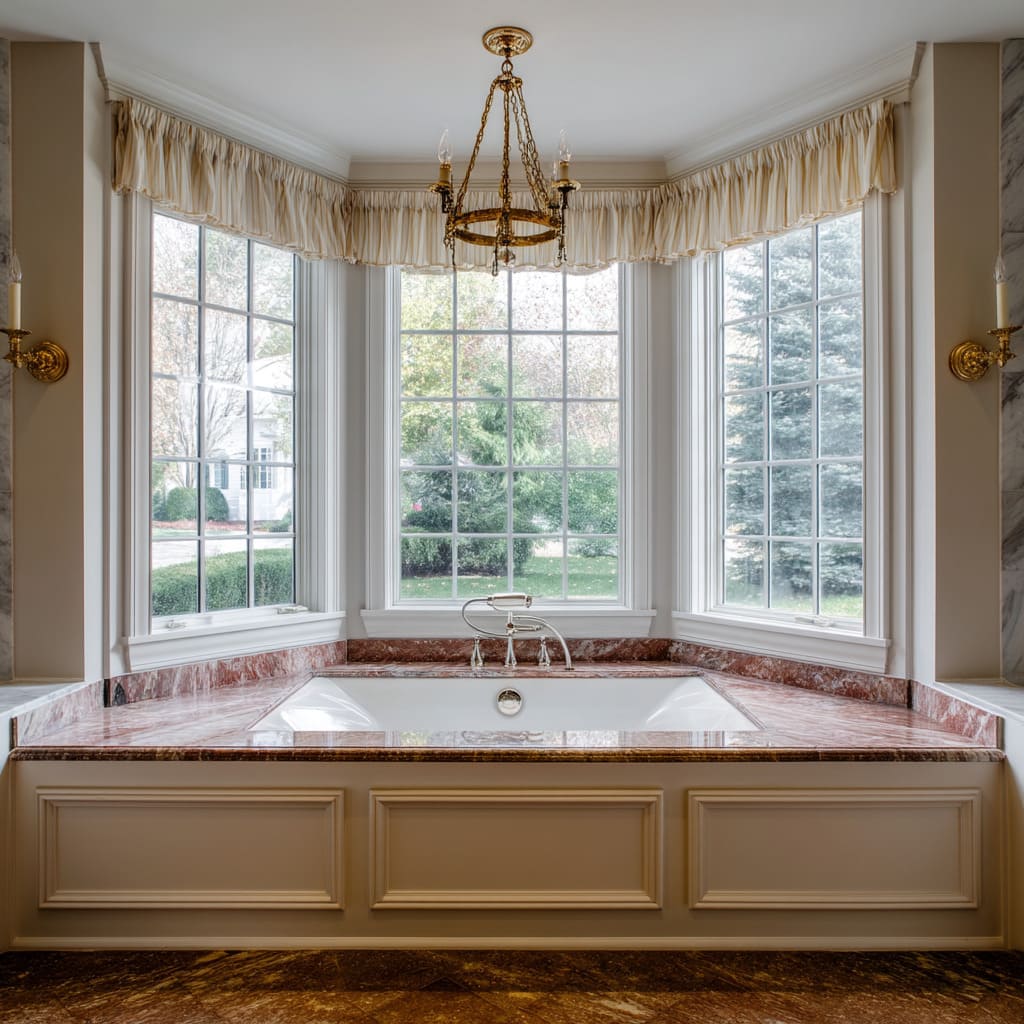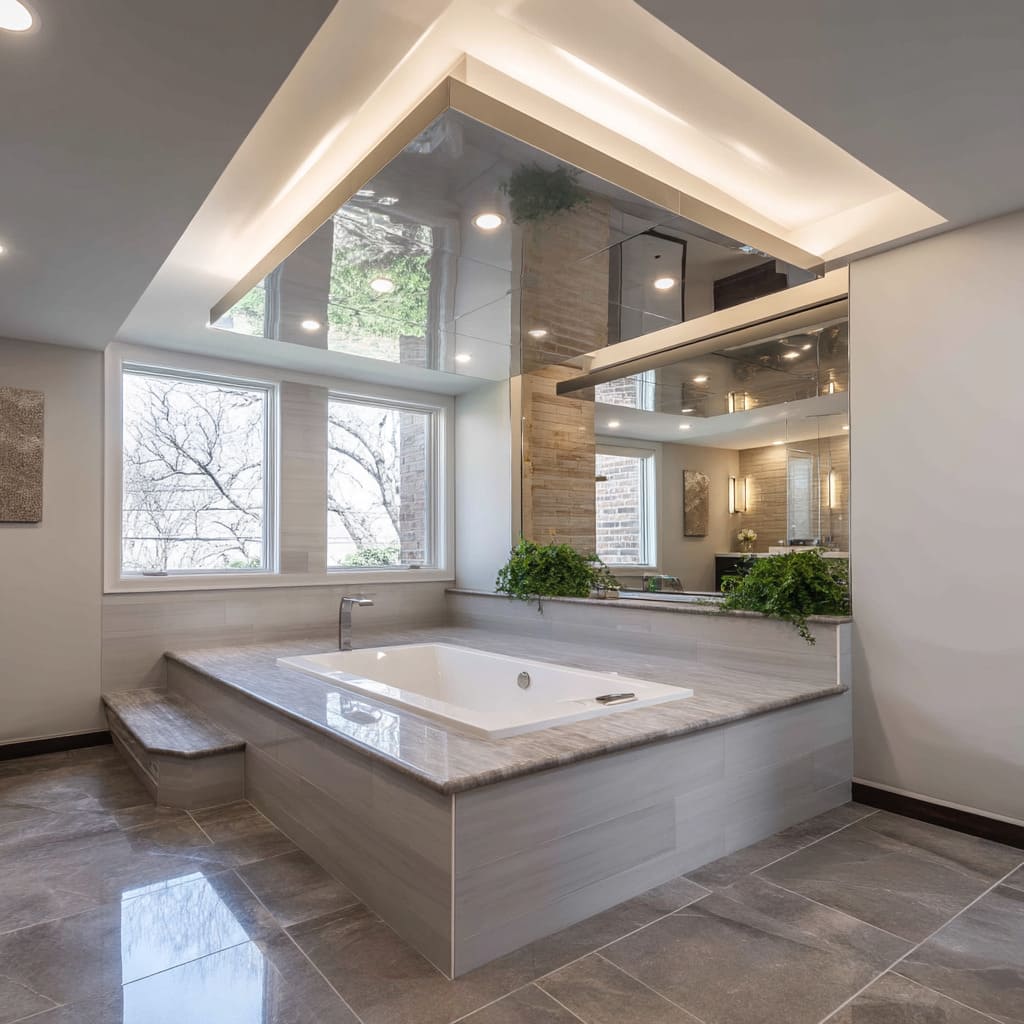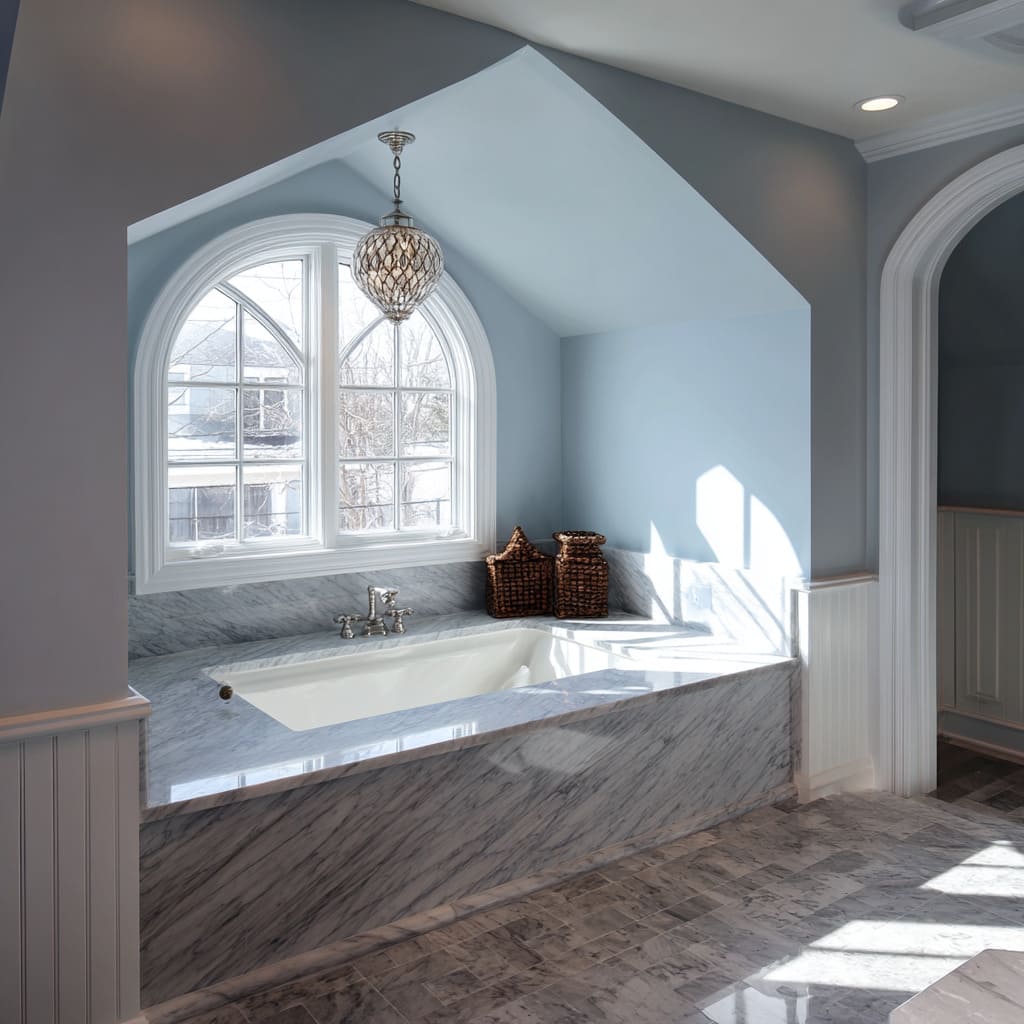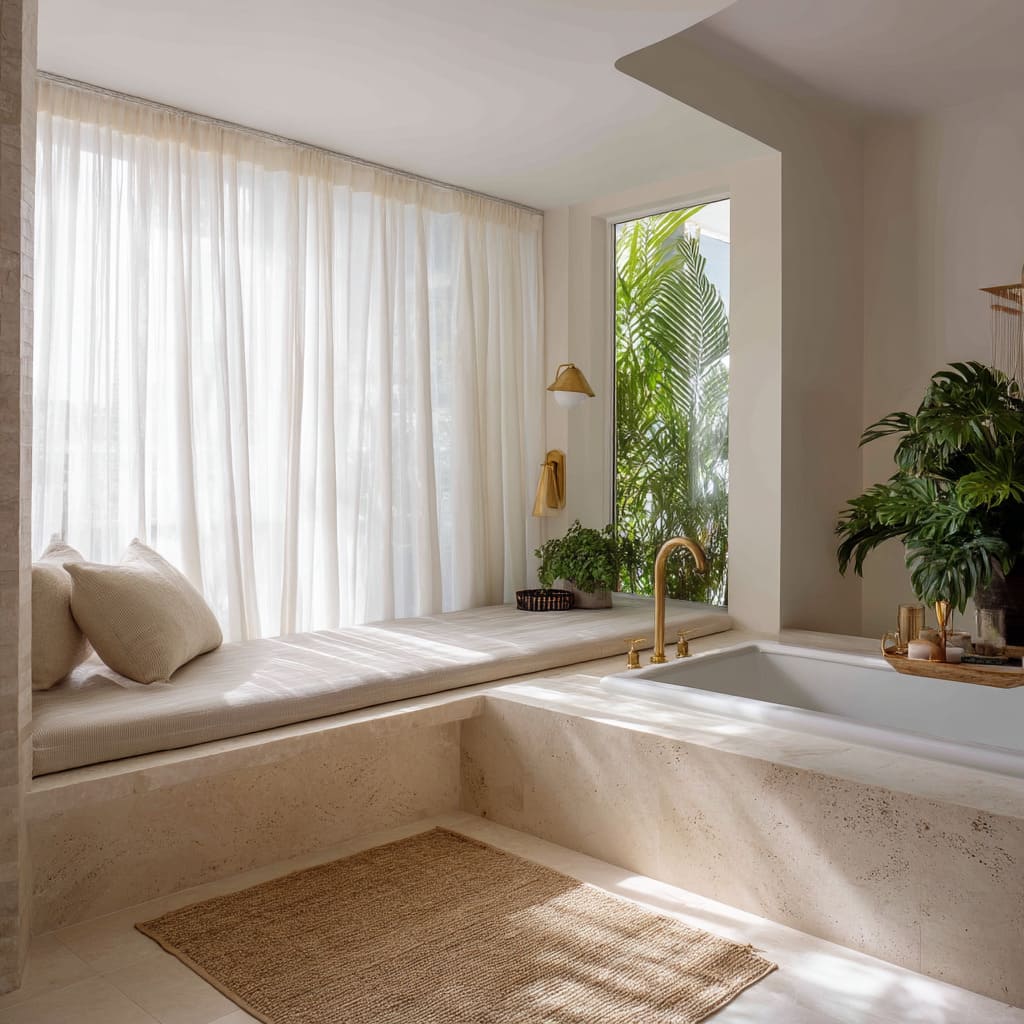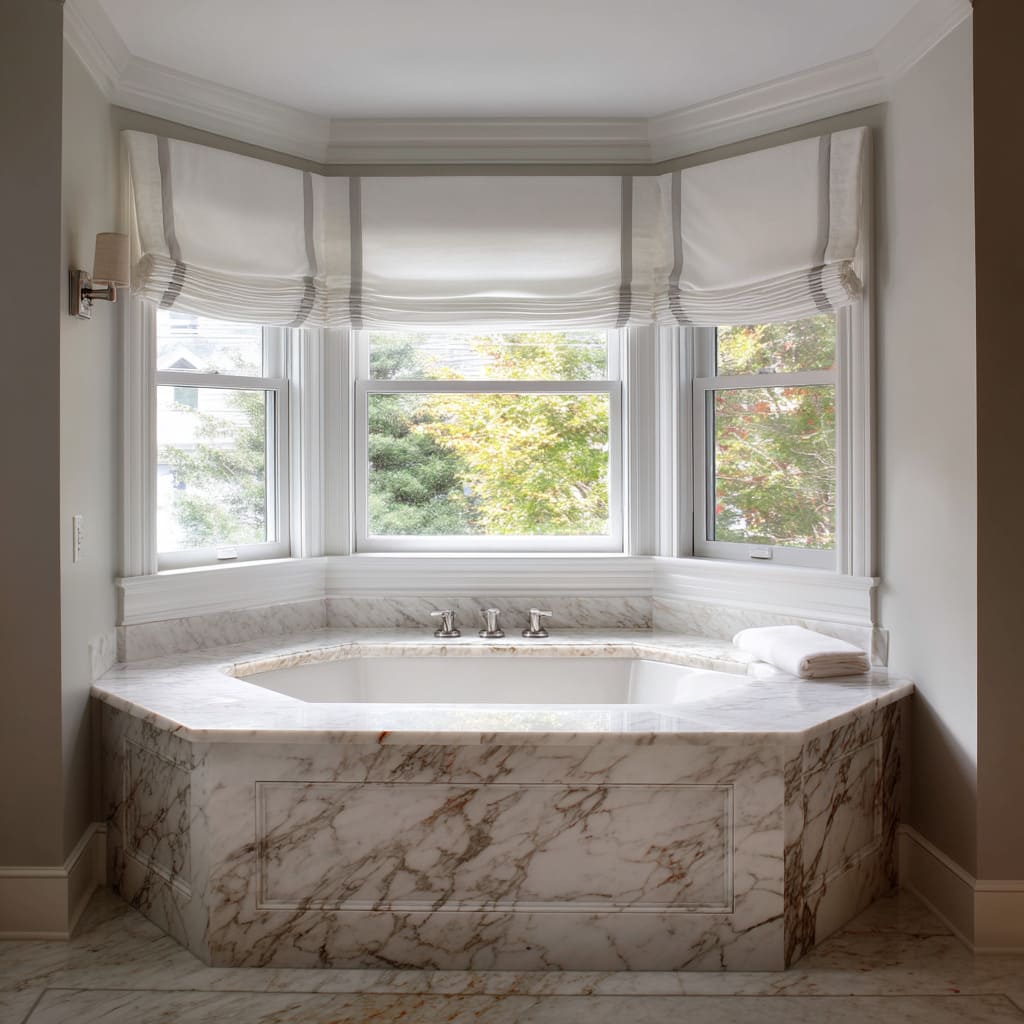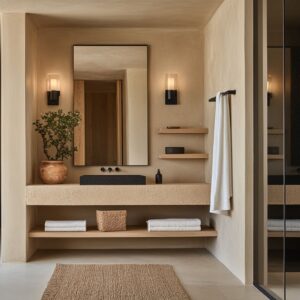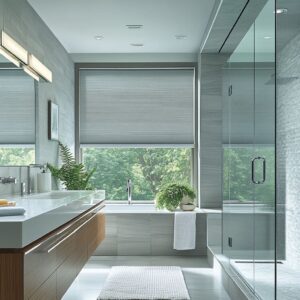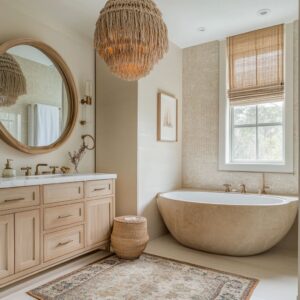Drop-in tubs are no longer treated as background pieces in bathroom design—they’ve become focal points, shaped by architectural detail, material layering, and lighting that does more than just illuminate. What used to be a basic install has turned into a space for thoughtful design decisions, where everything from the slope of the ceiling to the placement of a window plays a role in how the tub is seen and used.
This article looks at the quiet but significant shift happening in modern bathrooms: how tubs are framed, finished, and integrated into the room. Whether it’s a wraparound stone surround with seamless edges or a raised platform that floats with underlighting, each layout reflects a growing interest in making the tub area more sculptural and intentional.
If you’re exploring drop in bathtub design ideas that go beyond surface trends, this breakdown focuses on the elements shaping what makes a bathroom feel cohesive, efficient, and quietly refined.
Disclaimer: This article is for informational and design inspiration purposes only. Structural modifications, lighting installations, and plumbing configurations described here should be carried out or reviewed by qualified professionals in accordance with local building codes and regulations.
Architectural Echoes and the Power of Ceiling Geometry
Tudor-Inspired Angles
Some bathrooms pull from historic forms to shape a space that feels anchored to the home’s character. A vaulted ceiling that mirrors a Tudor-style roofline does more than echo tradition—it strengthens the visual presence of the tub alcove.
It turns the ceiling into an active part of the design rather than a blank overhead plane. A pendant hung precisely at the peak, especially one with a patterned or lattice-style shade, brings softness to the angular shape and casts textured shadows that shift with the light.
The use of continuous marble wrapping across tub deck, apron, and backsplash—without seams—adds to the sculptural quality. With fewer joints, there are fewer points for water to seep in over time, which adds both longevity and a cleaner finish.
This type of surround pairs well with transitional looks that balance classic detailing with updated materials. For those researching standout drop-in bathtubs ideas, this type of architectural framing makes the bathing zone feel purpose-built and naturally integrated into the home’s layout.
Diagonal and Octagonal Surrounds
Installing a tub diagonally or in an eight-sided frame takes extra precision—each piece of stone needs to be shaped to match adjacent angles. This effort pays off by creating more dynamic lines of sight, directing the view toward windows or sculptural wall features.
Instead of a tub feeling like a component added into a room, this approach positions it as the visual focal point. These surround types often appear in traditional homes where angular layouts are common but are increasingly reinterpreted in updated designs as a way to create standout moments.
Floating Illusions and Underlit Platforms
Some of the most modern-looking tubs appear to hover above the floor. When properly done, it makes the area feel more open.
The floating look also works well in smaller spaces, where any visible floor around the base can trick the eye into perceiving more square footage. Soft LED lighting placed under the apron helps reinforce the effect.
It casts a quiet wash of light across the floor, creating atmosphere and practical visibility at night. These details are especially common in newer drop-in tub surround ideas, where the focus is on clean lines and reducing clutter.
Low-Ledge vs. Elevated Tub Decks
- Low-Ledge Setup: A platform that barely lifts above the floor level makes for easy entry and keeps the silhouette sleek. It works particularly well in rooms aiming for a minimalist or contemporary feel.
- Raised Platform with Steps: Elevating the tub can set it apart visually and give it more presence, but the steps need to be carefully planned. If too steep or shallow, they can be awkward. When designed right, they not only improve access but double as extra seating or display space.
In both versions, the goal is the same: make the bath feel like a designed experience, not just a fixture in the corner.
Materiality and Seamless Cladding
Stone Continuity and Textural Variation
Using the same stone or stone-look material across several surfaces—tub deck, backsplash, and apron—creates a solid, cohesive block effect. This kind of layout requires careful control of veining, edge alignment, and finish, or the whole setup can feel patchy.
When the grout lines are tight and barely noticeable, the result feels carved rather than assembled. It shifts the bathtub from being an inserted element to feeling like part of the room.
You’ll see this especially in modern drop-in bathtub designs, where visual simplicity is supported by technical precision. A well-executed stone surround can make the entire area feel more grounded and intentional without adding clutter.
Wood Surfaces and Textural Contrast
Features like vertical slats or fluted panels do more than look good—they catch light differently throughout the day, adding movement and depth to flat walls. They also give a tactile edge to surfaces that might otherwise feel too smooth or cold.
In some projects, designers use these wood touches to soften the crisp lines of tile or stone, making the space feel more personal.
Color Temperature and Tonal Coordination
Warm materials like walnut, travertine, or light oak tend to read softer under ambient light, especially when paired with warm LEDs. These finishes can feel more inviting in cooler months or in rooms with less direct light.
In contrast, cool-colored stones paired with natural daylight create a cleaner, more vivid impression—perfect for bathrooms aiming for a calm look. Both choices work, but the mood shifts depending on how the light hits and how surfaces reflect or absorb it.
Windows and Strategic Daylighting
Viewshed Control and Privacy
Placing a tub near a window can be great for natural light and a connection to the outdoors, but there’s always the question of privacy. That’s where elements like frosted glass, tall greenery, or layered window treatments come into play.
In sunnier areas, extra-deep window frames or recessed trim can reduce glare while still letting the room breathe. The result is both practical and good-looking—cooler interiors with filtered light that doesn’t overpower the space.
Corner Windows and Bay Window Nooks
Corner-set windows offer a wide-angle view that expands the sense of space. The bather doesn’t just face one direction—they’re surrounded, visually, by the landscape outside.
It’s one of those subtle upgrades that makes a room feel more open without needing more square footage. Bay windows, on the other hand, let the tub become part of the room’s architecture.
They often anchor the layout, making the tub the central piece rather than something tucked away. Many of these setups layer in finishing touches like soft Roman shades or curved valances to keep things relaxed but not too plain.
These placements work especially well with thoughtful drop-in tub tile surround ideas, where the view, the surface material, and the framing lines all work together to create a strong visual balance.
Lighting Experiments and Illumination
Layers of Light: Pendant, Sconce, Undercabinet, and Natural
A well-lit bathroom doesn’t rely on just one source. Instead, it layers multiple types of lighting to control brightness, mood, and direction.
Pendants bring downlight from above and often act as focal points. Wall sconces frame the face and soften shadows.
Recessed fixtures in niches or ledges provide quiet fill light, while strip lighting under the tub or vanity base brings a glow close to the floor. When planned carefully, each of these types plays a role both visually and practically.
In some setups, mirror placement becomes part of the plan—reflecting light to create the illusion of taller ceilings or wider walls. It’s a common trick in spa-influenced layouts, especially where recessed strip lights bounce off mirror edges to stretch the space upward without physically altering it.
Lighting for Sculptural Shadowing
Light placed at an angle across vertical textures like fluted wood, ribbed tile, or stacked stone can make them pop without any added ornament. These shadows aren’t accidental—they shape how the surface is perceived.
Soft ridges or stone edges gain definition under grazing light, making the entire tub frame feel more dimensional. This effect adds visual depth and keeps the materials from reading flat or lifeless, which is especially useful in muted color palettes where light is the main source of contrast.
Functional Ergonomics and Layout Specifics
Deck-Mounted vs. Wall-Mounted Fixtures
Choosing where to install the faucet changes how the tub functions and feels. A deck-mounted setup may require a wider ledge, but it allows for straightforward access to plumbing if needed.
Wall-mounted fixtures, on the other hand, create a cleaner deck surface and often work better in tight spaces. Both approaches have benefits—it often comes down to layout and how the space will be used daily.
Off-center placement, seen in many homes, isn’t random. It can reflect the preferred side of access or be planned around seating position in the tub.
What might seem like a small tweak actually affects comfort more than people expect.
Integrated Seating, Steps, and Storage
Expanding the tub surround into something more interactive makes the bathroom feel tailored to daily use. Here’s how those extras show up:.
- Benches allow for cooling down, toweling off, or even just extra storage.
- Steps help with entering taller tubs and often double as informal seats or display platforms.
- Storage cubbies or open shelving built into the deck or apron let daily items live within reach without clutter.
These elements also change how the tub is perceived—shifting it from a functional zone to a comfortable, lived-in space. Good drop-in tub frame ideas often include these features not as add-ons, but as part of the overall layout thinking.
Even in more contemporary setups, you’ll often find that drop-in tub surround designs are increasingly shaped by real-life function—cleaning ease, reachability, and comfort—not just looks. And that makes a difference you can feel every time you use the space.
Integrated Wet Zones and Spa Logic
Seamless Shower-Tub Boundaries
Linking the tub and shower through a shared marble ledge or tile plane isn’t just about looks—it serves multiple purposes. It acts as a splash guard, offers extra shelf space, and keeps the visual line continuous across both areas.
But for this to last, the build underneath matters as much as what’s visible. This kind of integration is gaining traction in luxury settings where form and utility go hand in hand.
Many of today’s smart drop-in bathtub design concepts are moving toward this seamless approach, especially in homes that blur the line between daily use and retreat-like comfort.
Dedicated Soaking Zones
Leaving out the shower entirely near the tub creates a more focused bathing experience. These layouts lean into the idea that the tub can stand on its own—no screen, no sprayer, just a quiet corner designed to soak and slow down.
You’ll often find this setup in spa-style layouts where the bathroom isn’t packed with overlapping functions, but instead allows space for single-purpose relaxation.
Color Strategy and Finishing Details
Harmonizing with Exterior Views
If the bathroom has a window facing trees or garden space, designers often keep the inside palette understated. Earth tones and soft neutrals let the outdoor color take center stage.
It’s a way of linking the inside and outside without forcing it—just letting the view become the accent wall. In colder areas, materials with warm undertones—like cream stone or matte clay tile—can balance out bluish daylight, making the room feel more comfortable without relying on extra artificial light.
Subtle Coordination of Hardware and Accessories
Finishes matter. Matching the metal of a tub filler with nearby vanity hardware or choosing brushed textures that mimic surrounding stone can make a space feel calm and pulled together.
That said, contrast can be useful too—like pairing black fixtures with light tile for a sharper visual edge. It’s all about using small details to shape how quiet or how crisp the design feels.
Conclusions and Key Observations
One pattern holds steady—drop-in bathtubs have grown into more than a basic fixture. They’re being shaped, placed, and finished as if they’re part of the house itself.
Integration of Architecture and Tub Design
In many designs, the tub feels built into the house in a literal sense—vaulted ceilings echo rooflines, windowsills stretch into tub decks, and angles follow the same visual rules used in the rest of the space. This isn’t about decorating around a tub, it’s about making the tub belong from the start.
Light as a Fourth Dimension
Lighting choices shape how these tubs are seen and experienced. LED strips, pendants above, and even daylight reflected from mirrors all help give depth, shadow, and softness to hard surfaces.
The lighting plan can shift the mood as much as the material palette.
Maximizing Continuity for a Cohesive Look
Designs with stone that wraps without interruption, or grout lines that barely show, create a look that feels carved rather than assembled. Flush edges, hidden fixtures, and smooth transitions make everything read as one continuous surface—especially in bathrooms where the layout depends on that kind of flow.
Craftsmanship Details
It’s not just the big choices that count—it’s how the veining of stone lines up at a corner, how curves are handled at transitions, or how tile fits perfectly inside a niche. Those moves are often overlooked but they’re what separate average work from top-tier results.
In high-end drop-in bathtub design, these details tend to quietly do the heavy lifting.
Human-Centered Ergonomics
The way people use the space influences more than we notice. Faucet placement is often chosen based on reach comfort.
Step heights are adjusted for natural movement. Benches and ledges aren’t added randomly—they reflect how people actually relax or move through the room.
Hybridizing Styles
Some of the most striking designs mix two languages: a modern tub deck with colonial trim, or a traditional valance over a frameless window. This style blending is where things get interesting.
It allows bathrooms to respect the house’s history while pulling in clean, current finishes.
Altogether, the modern approach to drop-in tubs shows how much intention can be packed into one zone. Material, layout, and light all come into play.
And the more these elements are treated as connected, the more the result feels complete. That’s what separates a standard install from something that actually adds value to how the space feels and works.

